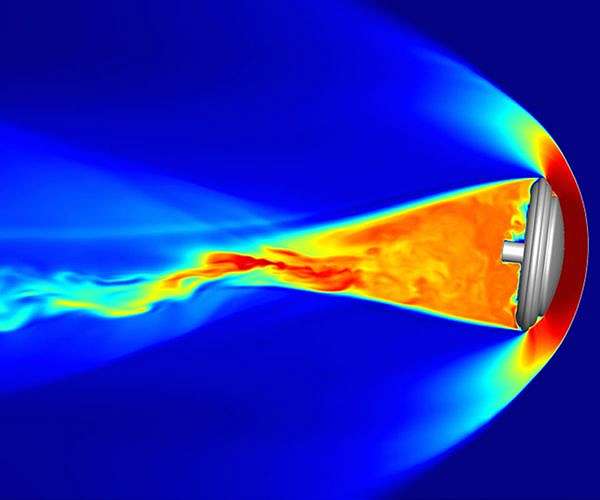Sandia evaluates heat shields for Mars Sample Return and Titan missions
by Clarence Oxford
Los Angeles CA (SPX) Oct 16, 2024
Sandia National Laboratories’ National Solar Thermal Test Facility is utilizing solar energy to simulate the intense heat experienced during atmospheric reentry and hypersonic flight. The latest tests aim to support NASA missions, including the Mars Sample Return campaign, a joint effort with the European Space Agency to bring Martian rock samples to Earth for analysis. These samples could reveal evidence of ancient life and aid preparations for future human missions to Mars.
As part of the Mars Sample Return mission, a Sample Retrieval Lander would carry the heaviest payload ever sent to Mars, along with a rocket for launching the collected samples into Martian orbit. Heat shield materials for the lander recently underwent testing at Sandia, said Sandia engineer and test director Ken Armijo. “This would be the first mission to return rocks from Mars to Earth; it’s got a bigger payload,” Armijo explained. “The heavier the payload and the bigger the entry vehicle, the hotter the vehicle gets during atmospheric entry, and the better the heat shield needs to be.”
Sandia’s solar testing facility uses hundreds of heliostat mirrors to focus sunlight on samples up to three feet wide, simulating atmospheric conditions on different planets. Unlike arc jets and lasers, which consume significant power, this approach saves between 15,000 to 60,000 kilowatts per test, equivalent to running 5,000 to 20,000 clothes dryers simultaneously.
The facility’s solar power tower, 200 feet tall and equipped with 212 heliostats, provides a unique environment for testing materials under high solar flux and heat. “We have high flux and high flux distribution on the Solar Tower,” said Armijo. The facility can simulate hypersonic flight conditions and accommodate large test samples, including full aircraft sections. Sunlight is concentrated up to 3,500 times its normal intensity, allowing precise control over heat exposure.
Compared to the $100,000-per-day cost of arc jet testing and the $150,000-per-day cost of laser testing, solar testing costs about $25,000 per day, Armijo noted. The intensity of sunlight can be adjusted by varying the number of heliostats focused on the sample, mimicking different reentry conditions. NASA’s lead engineer for the Sample Retrieval Lander’s heat shield, Brandon Smith, commented, “Sandia’s ability to test at this size nicely complements our other test facilities.”
Testing also supports NASA’s Dragonfly mission to Titan, Saturn’s largest moon, with heat shield materials made from Phenolic Impregnated Carbon Ablator, developed at NASA’s Ames Research Center. Previously used in missions like Stardust and Mars 2020, the material was tested on two-foot-wide samples at Sandia. The facility’s capability to test larger samples allowed NASA to simulate the stress and strain experienced during atmospheric entry.
Dragonfly, a rotorcraft designed to explore Titan’s methane-rich atmosphere, faces unique challenges due to Titan’s dense atmosphere, which is four times thicker than Earth’s. To recreate the thermal conditions of Martian and Titan atmospheric entry, nitrogen gas is blown over the heat shield samples during tests. A newly installed gas line running from the base to the top of the power tower ensures adequate gas flow, said Armijo.
Daniel Ray, a mechanical technologist at Sandia, was responsible for setting up the gas line and addressing issues during tests. “My role on every project is to make it work,” Ray said. He resolved an issue with the carbon felt catching fire by designing ceramic shields to protect the system.
In 2022, Sandia also supported the Applied Physics Laboratory’s tests on a heat exchanger prototype intended for future spacecraft. The prototype endured light levels equivalent to 2,000 suns, reaching temperatures of 3,100 degrees Fahrenheit, demonstrating its ability to withstand the intense heat of a close solar flyby.
The facility’s history includes various aerospace projects, such as testing radar protection domes and evaluating materials for space shuttles and military aircraft. Sandia has refined its solar testing methods over the years, said Armijo. “Because we can dial-in the profiles, we have more confidence that it’s going to survive and function well during a mission. Having confidence that it will make it to Mars, land and pick up the rocks safely is important.”
Related Links
Sandia National Laboratories
Mars Sample Return
Rocket Science News at Space-Travel.Com



